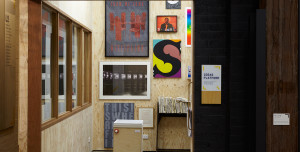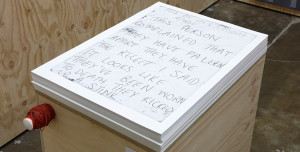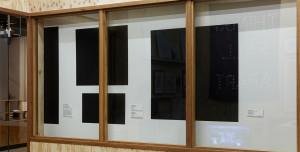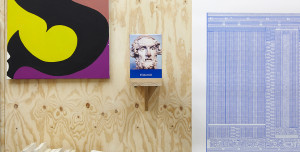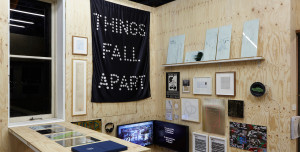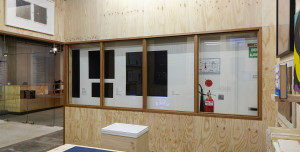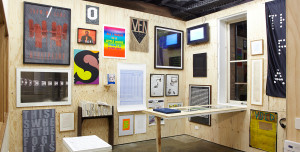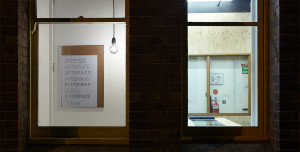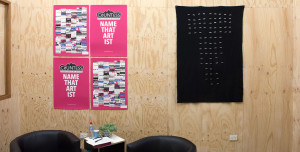Ideas Platform
Scott Donovan
Writing Art
25 Jun – 16 Jul 2014
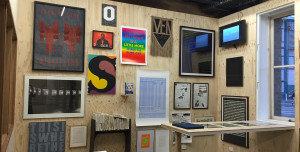
Artspace
43–51 Cowper Wharf Roadway
Woolloomooloo NSW 2011
Sydney Australia
The use of text in art, as more than a mere descriptive aid, derives from conceptual and post-painterly practices of the 1960s. Of course there were important precedents, most notably in the influential philosophical/critical works of Réne Magritte or Marcel Duchamp, however it could be argued that it was not until the 1960s, with art’s disciplinary parameters already radically expanded, that the relationship to words could take centrestage. Part of this shift may be traced to the rise of advertising and its colonisation of the post-war urban spaces of the United States in particular. In a European context it could also be traced to the influence of the structuralist and post-structuralist theories of philosophers as diverse as Maurice Merleau-Ponty, Michel Foucault, Jacques Derrida, Gilles Deleuze and Roland Barthes. These thinkers were some of the first to consider at length language’s relationship to the Image. For them, and in a variety of ways, language could never simply be illustrative. In fact, as Foucault would point out in his famous essay on Magritte’s iconic painting La trahison des images (Ceci n’est pas une pipe) — The Treachery of Images (This is Not a Pipe) — 1929, words and pictures were irreducible to one another; they spoke to one another without language being able to take the upper hand. Words painted worlds while texts could be images.
Writing Art illustrates that the use of text has evolved into an integral and multifaceted aspect of contemporary art. The use of text may be fundamentally material, focusing on the resonant connotations of words. It may be punning and self-referential. It may be spatial and constructive. It may draw close to poetry while maintaining a strong visual identity. It may be documentarian, or mockingly so where text is suggested as part of a narrative or fictional archive. Ultimately, it is the sheer mutability of the textual within the context of the visual arts that allows it to keep speaking, among works and to an ever-growing audience receptive to the form.
